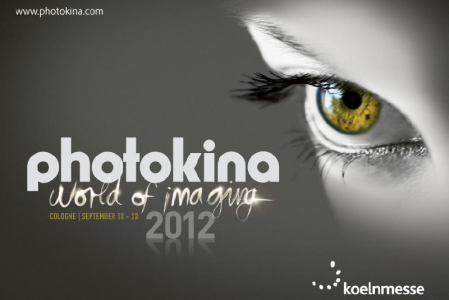Q&A with Fujifilm: The insiders’ view on the development of Fujifilm’s X-series cameras
posted Wednesday, September 26, 2012 at 2:44 PM EDT

Dave Etchells had a chance to sit down with senior product planning and marketing executives from Fujifilm at Photokina 2012. He came away with a lot of insight about Fujifilm's development process, especially the X-Trans sensor, and some nice tech tidbits about the inner workings of the X-Pro1 and the new X-E1 and XF1.
Dave Etchells/Imaging Resource: First of all, thank you very much for making time for us today. Our readers are obviously very interested in the X-series, and street photography is one of that line's biggest appeals. Many are wondering when there will be a pancake lens for it.
Takashi Ueno/Fujifilm Corp. (thru translator): I have one right here.
[Dave is immediately handed an X-series pancake lens.]
DE: Wow, now that's a fast response! [laughter]
Hiroyuki Saitou/Fujifilm Corp.: We will be introducing the pancake lens early next year. We haven't finished it yet. This is just a mock up, but we are definitely planning on releasing it.
DE: One of our readers wants to know more about your sensor technology. It's been a real strength of the X-series, but at the same time, photographers want to see better raw support. Do you have plans to improve the experience of photographers working with the X-series raw files in third-party software?
HS: The camera itself can process the raw files, of course. Secondly, we also have our own SilkyPix software that comes with the cameras, which can work with the raw files. Then in addition, we are working with third-party vendors to provide support. For instance, Adobe already has made a software adapter for the X-Pro1. Our partnership is ongoing with a number of software companies.
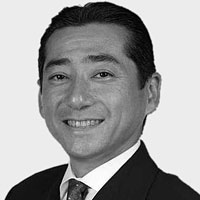 |
 |
 |
|
|
Hiroyuki Saitou
Operations Manager (Overall Product Planning) Products Planning Division Electronic Imaging Products Fujifilm Corporation |
Takashi Ueno
Operations Manager (X-series Product Planning) Products Planning Division Electronic Imaging Products Fujifilm Corporation |
Haruto "Harry" Iwata
Director Product Development Electronic Imaging Division Fujifilm North America Corporation |
|
 |
 |
||
|
Kayce Baker
Director, Marketing Electronic Imaging Division Fujifilm North America Corporation |
Tomoyuki Hasegawa
Marketing Division Electronic Imaging Products Fujifilm Corporation |
||
DE: Now that the Adobe has created an adapter filter that works with the X-Pro1, the other cameras in the line have the same color filter pattern, so it should be easy for you to do more of this.
HS: Personally, I think so. Adobe, Apple, DxO… they are are also working on our new products.
DE: Fujifilm just announced firmware for the X-Pro1 that greatly improves autofocus at either low or high ambient light. And also the write performance to the card is supposed to be twice as fast. Can you tell us anything about what was done to make those improvements?
TU: We did two things to improve the performance. One was to enhance the autofocus algorithm, and the other was to increase the reading speed from the image sensor in firmware.
DE: So you were able to increase the data rate off the sensor just through firmware improvements? And because you can read faster from the sensor, you can write faster to the card?
HS: Yes, that's correct.
[Ed. Note: This is very interesting, as it's the first time we've heard that sensor readout speed can be optimized via firmware.]
DE: We are very thrilled to see the return of manual zoom on the XF1, because we always feel we have more of a connection to the camera with manual zooming. Is this something you've been hearing a lot of requests for? Can we look forward to more manual zoom cameras from Fujifilm in the future? And why did powered zooms become so dominant in the first place?
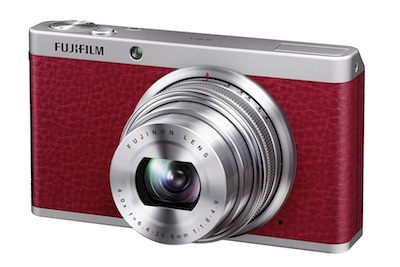
Kayce Baker/Fujifilm North America Corp.: There are a lot more requests for manual controls -- including manual zoom -- from our customers today. I think powered zooms became more dominant because they allowed single-handed control of the camera and made it easier to operate. But as more and more photography-based consumers are starting to evolve, they want to have that control with two hands.
HS: Yes, particularly for the people who really want an authentic product, nice-looking, nice picture quality, etc. We don't choose manual zoom for entry-level cameras because it doesn't work for those users. The easy auto mode is very useful for them. So when we talk about the higher end, we really think manual is appealing to the enthusiasts.
Haruto Iwata/Fujifilm North America Corp.: Before I came to the US, I worked at the planning office on the XF1. An important part of that lens is how you can easily push it back into the standby position. There is the folded or portable position for travel, the standby position where it's pulled out, and the photo position where it extends all the way so you can shoot. In standby position, it's very quick to turn on the camera and shoot. But when it's in portable position, you can put it in your pocket. Customers wanted manual operation, but also wanted to put it in their pockets. The XF1 is the only camera in the world like this.
[Ed. Note: Before readers jump in to note that the original Olympus PEN kit lenses also telescoped manually, note that those lenses always remain outside the body. What Fujifilm is claiming as unique is a lens that collapses pretty much all the way back into the body.]
DE: Handling it here at the show, the lens feels very solid, and that's something that we haven't found in lot of telescoping lenses. In the case of some Micro Four Thirds cameras and lenses, the vibration from the Copal shutter everyone uses has produced movement in the lens elements that cause image blurring.
KB: When you start shooting with it, just like you said, it actually feels very solid.
DE: The X-series cameras were a very significant change of direction for Fujifilm, and we're curious how that came about. How and when was the decision made to pursue that strategy for Fujifilm?
HI: In 2008, we started seeing that kind of trend: compact camera volume in the U.S. market had started declining, and we saw that lots of people were stepping up to higher-end models and even interchangeable lens designs. We really understood that many people using entry-level cameras found some problems once they got more familiar with them. So we thought that manufacturers really needed to step up, providing high end models more than before, to prepare for the demands of the consumers who want to take great pictures.
As more people got into photography, then they began stepping up to higher-end models and even interchangeable lens cameras. So we came to understand that many who started out with entry-level cameras and became more serious about photography wanted to upgrade their tools. We saw an opportunity to provide those step-up cameras and prepare for the demand of consumers who wanted to take better pictures.
One of the first concepts we discussed suggested a photo enthusiast-type model, that some pros can even use for a second camera, and that some collectors might want because it's of very nice quality and very nice design. We started asking people if they would want this sort of camera, and fortunately, our suggestion was very well received by the media and everyone.
Additionally, we had a couple of other ideas around these same concepts, only a little more accessible. So we made the X10 and X-S1, which has a long zoom. As a step-up, we also produced the X-Pro1, as an interchangeable lens camera.
We also thought this kind of model lineup would increase our reputation, and get people thinking Hey, Fujifilm has kind of interesting products, their X-series can help people take better pictures, and have a better photo-lifestyle.
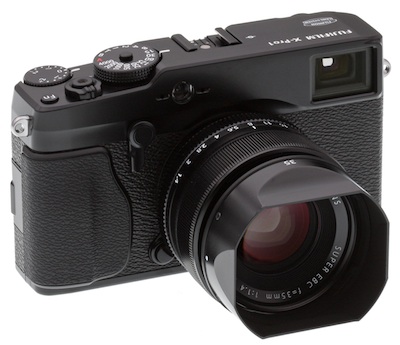
DE: You saw the decline in the point & shoots, and decided to move into the higher-end markets. The X100 was the first product in the X-series, but then the X-Pro1 was another big step. You said that you saw how the people responded positively to the X100, but did you only just start the design of the X-Pro1 at that point, or had it been in the works previous to that?
TU: Actually, at that point we had already developed the concept of the X-Pro1, before we had introduced the X100 to the market.
DE: And how did you decide to go on your own and make a whole new lens mount and sensor? If you wanted "compact," you could have gone Micro Four Thirds. What was the decision about whether to join the industry standard or to create your own standard?
KB: I can answer that one: Quality. A larger sensor. Fujifilm has always been very focused on great quality images, great resolution and great color, especially the color that comes out of our files. So we wanted to make sure that we had the sensor just right: As opposed to going down to Micro Four Thirds size, we wanted to go up to the APS-C sensor. It would give you the quality as well as control over the color.
HS: We were actually very confident about both the lens and the sensor from the beginning, particularly because our lens technology has more than a 50% share for professional broadcasting lenses. Also, our sensor technology has a long history of development and improvements, so we had a lot of confidence in that area too. So we felt that our division could bring together many things to optimize our picture quality and color.
DE: Now that it's been out in the market for a little while, are the customers for the X-Pro1 who you expected them to be? Or did you find different people buying it than you thought initially?
KB: Actually, it's pretty much what we expected, with just a touch of some of the outliers. On the one hand, it's the camera club folks who wanted a really high-end DSLR but didn't want the bulk; they stepped up to the X-Pro1. Then of course, the professionals have been picking them up as well as the advanced amateurs. That is the market we were expecting.
DE: Who were those outliers?
KB: A lot of different categories: Wedding photographers, street photographers, photojournalists…
DE: With the newly announced X-E1, you brought the price down a lot, and you also have a zoom lens geared more towards the amateurs. Is that a direction that we'll see continue? Will you continue to extend further down to appeal to more casual users, or focus more again on the really high-end users?
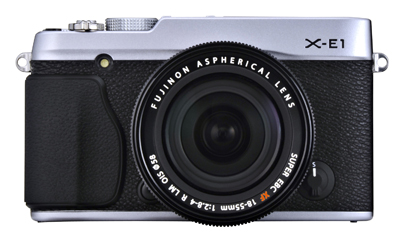
HI: Very good question! We are seriously thinking about it. But actually, we are thinking about a wide variety of lenses, not only two cameras. To be honest, though, we don't want to talk too much about it. [laughter] Stay tuned to find out.
DE: Part of the impressive image quality we saw with the X-Pro1, we attributed to the unique color filter array and that's very different than what anyone else has done in the industry. Maybe you could comment on how that came about. What was the process that led you to this very different color filter array?
HS: Fujifilm tried to develop a really unique sensor and this turned into the X-Trans sensor. The idea was based on the silver halide arrangement in film. You've seen our unique filter arrangement, right? This idea came from silver halide.
DE: Your key point was to make it look more like silver halide, a more random pattern is part of that, a random pattern of colors.
HS: Of course our top priority was to get high quality. That led to the silver halide idea and the color filter array.
TU: And one additional point is that we are very confident about the high quality of our lenses. However, the typical CMOS sensor didn't allow the lens to deliver its full capability. What we wondered was how we could maximize the picture quality of the lens, and the answer we found was that low-pass filter degraded the resolution. The question became how could we remove the low-pass filter. We studied this and came to the conclusion that the answer was to change the filter array, and the result was the X-Trans sensor.
DE: I realize there aren't any sensor engineers at the table today, but are you able to provide any technical explanation of how the X-Trans color array works to eliminate the low pass filter? I'm thinking in terms of things like what the spatial frequency response looks like in each of the color channels, vs what the luminance response comes out at the end.
KB: The way the filter array is laid out, within each 6x6 cell, every single row and column always has at least one pixel of either red, green, or blue in it. While it looks like there's a lot of green in it, with the way it's patterned, it's still very randomized. But as far as details of spatial frequencies, I think you'd have to talk to one of our sensor people.

DE: Why haven't we seen something like X-Trans earlier? Was it that you needed a more powerful processor to be able to process the six by six blocks of pixels? What limitations existed previously that since been overcome to let you create the X-Trans?
TU: The biggest problem was how to process the signal from the sensor to the final image. The point is that concept was there from the beginning, but the biggest difficulty was, after making the array random, how to gather all the data back together again to make a nice picture. Developing that "reading" process took a long time.
DE: So the process of unscrambling the random data was very difficult?
HS: What I meant was, to create this new array, it took a very long time. But the concept itself has existed for five or six years.
TU: Yes, we'd already done the R&D for some time.
DE: You did R&D for five or six years before the concept became a product?
HS: Yes, it took a very long time to create the new algorithm. Because as a company we produce the chip and the processor and the camera, we could achieve a very high-level algorithm. Because everything in the system was made by Fujifilm, we could achieve a very high level of processing.
[Ed. Note: We find this fascinating, that it wasn't sensor processing or the power of the camera's processor that was the limiting factor in development, but rather the mathematics required to reconstruct images from the pseudo-random color array pattern.]
DE: This may also be a question for the sensor engineers, but the X-Trans sensor did very well with high-ISO noise. Overall noise levels were low, but what was there was very fine-grained, and the noise reduction seemed to do a very good job of holding onto fine detail. Can you say anything about how the X-Trans differs from previous sensors in ways that contribute to good noise performance?
HS: Let me try to explain. As we explained earlier, the current system has no low-pass filter. This makes it easier to recognize noise vs. signal. To achieve good image quality, we optimize the signal part itself to make the image. Then when it comes to the noise, it's much easier to recognize whether it's noise or not. Especially for the color noise.
DE: Ah, so it's not just that the sensor itself is more sensitive, but because of the way the sensor works, and the fact that you don't have a low-pass filter smooshing your signal around, you can do a better job of noise reduction.
HS: Yes. The first basic concept, as I explained, is how much easier it is to recognize noise signal. And secondly, after it recognizes the noise itself, another important point is the location of the noise signal. Location, meaning that when we have a large colored area with some colored noise, that's no problem for the noise reduction, we can eliminate the noise there. But when the system finds some color noise along edges, it's a more sensitive situation, and we can minimize the noise reduction. By doing this, we can maintain high image quality because too much noise reduction can obscure edges and lose fine detail.
DE: Let's move on to another unique Fujifilm technology: The X100 had the Hybrid Viewfinder, an optical finder with an LCD overlay on it. It was an interesting innovation but it doesn't seem to be in the X-series going forward. What are the reasons for that?
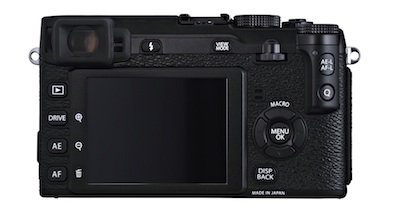
KB: There are a couple of reasons. The X-Pro1 has a Hybrid Viewfinder and that was designed to let you shoot in a certain way, in a way that lets photographers actually interact more with their subjects. But it's very costly to put in there, and it also adds a lot of girth and a lot of space to the camera.
So it's physically the size, especially if you wanted to have a Hybrid Multi Viewfinder. Remember. In the X-Pro1, you have a little lens that moves in place to be able to add functionality to the lens as you get closer and you need some parallax correction. That little piece added a lot of spatial problems because it's a fairly big. In order to be able to bring the size down and make the camera more comfortable to use yet still have a viewfinder, we added an Organic LED electronic viewfinder.
Actually, a lot of our other lens design technology went into the OLED viewfinder as well, to create an almost optical viewfinder-esque view. It's a 2.36 million pixel viewfinder so it's quite bright and extremely detailed.
DE: That's very interesting. You don't normally hear about viewfinder optics.
HI: In this new viewfinder, we included our aspheric lens technology, and so the XE-1's viewfinder is very clear, and has a very wide viewing angle.
KB: The reality is that since the X100, we've been doing this -- evolving the sensor, the lenses and the viewfinders, and also, of course, the processors and so on. But the viewfinders have been changing along with the rest, using the optics, using a lot of our processing technology as well.
DE: That's a really frequent complaint of mine with camera viewfinders: As I look in the corners, it's often very distorted, with coma, flare, and geometric distortions. It's a very poor view.
KB: Yes, in fact, this one was designed for anybody who has glasses as well. It has a very high eye point, while still keeping a very wide field of view.
DE: Changing topics a little bit, we're seeing a lot of movement in the industry to use WiFi in cameras to connect them to smartphones and tablets. And you've just announced the Fujifilm F800EXR with that feature. Do you see WiFi or similar technologies as a key factor in facing the smartphone competition?
HS: The most important point to us is that our cameras provide you with the picture you want to have. Then the question is how to transfer the image to another device. In that area, WiFi is one solution. In the coming years, WiFi will be important, especially to transfer the image from camera to smartphone. That's why we have it.
DE: So you think we will see WiFi on more and more cameras in the future?
HS: Yes. But the key point is how easy it is for the consumer. Our F800EXR is quite easy to use. It's kind of a peer-to-peer system we have, only without having to input an SSID code or password.
DE: You pair the camera and the phone, so you don't have to set up the WiFi each time.
HS: That's right.
DE: Another area we're seeing some movement in now is Android cameras. What do you think of those, and is this a future direction your cameras will go rather than connecting to the phone?
HS: Good question. We think that the most important thing is that a camera should take the excellent pictures the customer wants, as compared to the smartphone. Some manufacturers may combine the two into one, but for Fujifilm, image quality is the first priority. Then, the important thing is how the camera and smartphone are harmonized together. Some manufacturers just put the two into one. We want to harmonize.
DE: So you are you saying that you may do that or that Fujifilm's feeling is to keep the two separate and just make a better camera with connectivity?
HS: It's too early to say, but the key point is to harmonize them as a single device.
KB: I think the jury's out right now, because just two of them have come out, and we need to see what the real response is. I think the reality of what they have is a very consumer interface approach to photography. But what camera manufacturers do is a photography approach for consumers. The photographic interest is more about capturing a high quality photo, capturing pictures, memories, and so on, whereas the other one, it's more like this hybrid that they've done. But where it all ends up and how people are able to really use it still remains to be seen.
DE: What you're saying is that we're in very, very early days of that whole movement. It's not clear whether that's really the way to go or there might be another way.
KB: I mean obviously, the phone situation, that's more of a consumer interface. The camera is just tacked on to it.
DE: Very interesting. Thank you all for your time.
Fujifilm (group response): You're welcome.
